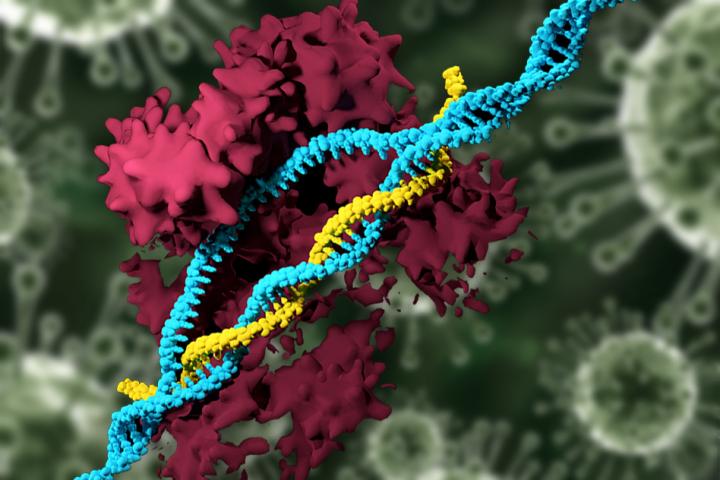Category: bioengineering – Page 201


DARPA Thinks Bioengineered Spy Plants Are “The Future Of Intelligence Gathering”
If any organization embodies our idea of the classic mad inventors, just running amock with crazy ideas, it’s DARPA jumping dog robot? Sure. Self-guiding bullets? What can go wrong? Vertical take-off plane? Well, why not? Bioengineered spy plants? Wait, what?
Yes, the Defense Advanced Research Projects Agency – DARPA – the part of the US Department of Defense responsible for developing technologies to be used by the military, is planning to bioengineer plants for intelligence gathering.
DARPA says its new program “envisions plants as discreet, self-sustaining sensors capable of reporting via remotely monitored, programmed responses to environmental stimuli.” Because that doesn’t sound terrifying at all. Somewhere between 1984’s foliage microphones and the classic “bug” in a pot plant.

Revolutionary CRISPR Gene Editing with Nanoparticles
Looking back at best of 2017)
Summary: Nanotechnology meets gene editing. MIT researchers use nanoparticles instead of viruses to deliver the CRISPR gene editing system. This article first appeared on LongevityFacts. Author: Brady Hartman]
In a new study, MIT scientists have developed nanoparticles that deliver the CRISPR gene editing system, eliminating the need to use viruses for delivery.
Using the new delivery technique, the gene editors were able to cut out genes in about 80 percent of liver cells, the best success rate ever achieved with CRISPR in adult animals. Speaking about the success of the project, Daniel Anderson, senior author of the study and an associate professor in MIT’s Department of Chemical Engineering, said.
Using electric fields to manipulate droplets on a surface could enable high-volume, low-cost biology experiments
MIT researchers have developed hardware that uses electric fields to move droplets of chemical or biological solutions around a surface, mixing them in ways that could be used to test thousands of reactions in parallel.
The researchers view their system as an alternative to the microfluidic devices now commonly used in biological research, in which biological solutions are pumped through microscopic channels connected by mechanical valves. The new approach, which moves solutions around in computationally prescribed patterns, could enable experiments to be conducted more efficiently, cost-effectively, and at larger scales.
“Traditional microfluidic systems use tubes, valves, and pumps,” says Udayan Umapathi, a researcher at the MIT Media Lab, who led the development of the new system. “What this means is that they are mechanical, and they break down all the time. I noticed this problem three years ago, when I was at a synthetic biology company where I built some of these microfluidic systems and mechanical machines that interact with them. I had to babysit these machines to make sure they didn’t explode.”


Could Filtering Our Aged Blood Keep us Young?
An interview with Drs. Irina and Michael Conboy on the topic of young blood and blood filtering for rejuvenation purposes.
Due to a recently published study on the effects of young plasma on aged mice, we got in touch with Dr. Irina Conboy of Berkeley University. Dr. Conboy is an Associate Professor at the Department of Bioengineering and an expert in stem cell niche engineering, tissue repair, stem cell aging and rejuvenation. Before we dive into the main topic, let’s familiarize ourselves a little with Dr. Conboy and her work.
Dr. Conboy got her Ph.D. at Stanford University, focusing on autoimmunity. She met her partner in science—and in life—Dr. Michael Conboy at Harvard and they got married before embarking on graduate studies; they celebrated their Silver Anniversary a few years ago. During her postdoctoral studies, she began focusing on muscle stem cells, trying to figure out what directs them to make new healthy tissue and what causes them to lose their ability to regenerate the tissues they reside in as we age[1].
Together with her husband Michael, she eventually discovered that old stem cells could be reactivated and made to behave like young ones if appropriately stimulated. The Conboys’ parabiosis experiments—which consisted in hooking up the circulatory systems of aged and young mice—showed that old age is not set in stone and can be reversed in a matter of weeks[2].
Could science destroy the world? These scholars want to save us from a modern-day Frankenstein
The dozen people working at CSER itself—little more than a large room in an out-of-the-way building near the university’s occupational health service—organize talks, convene scientists to discuss future developments, and publish on topics from regulation of synthetic biology to ecological tipping points. A lot of their time is spent pondering end-of-the-world scenarios and potential safeguards.
A small cadre of scientists worries that lab-made viruses, AI, or nanobots could drive humans to extinction.
